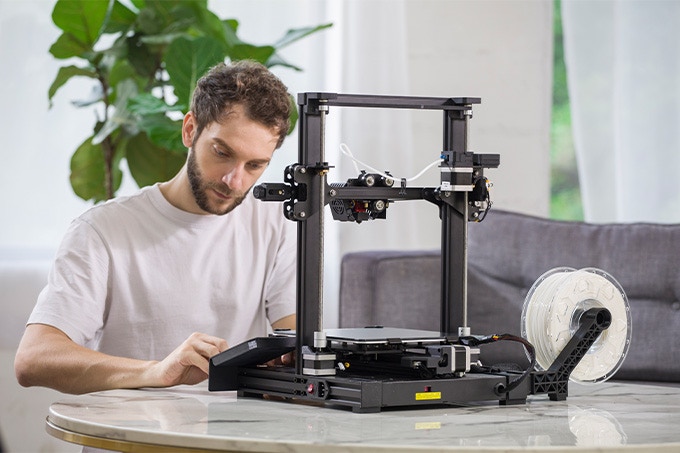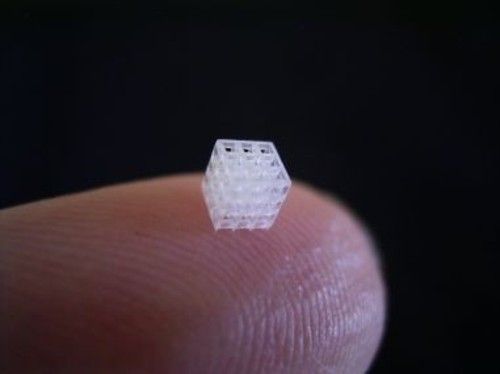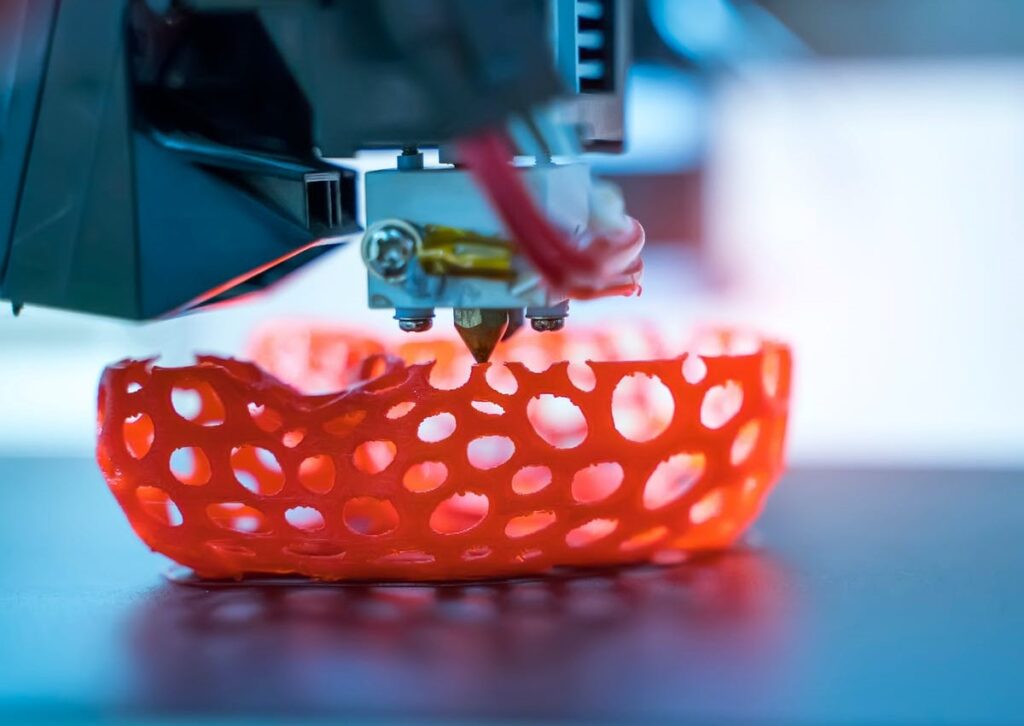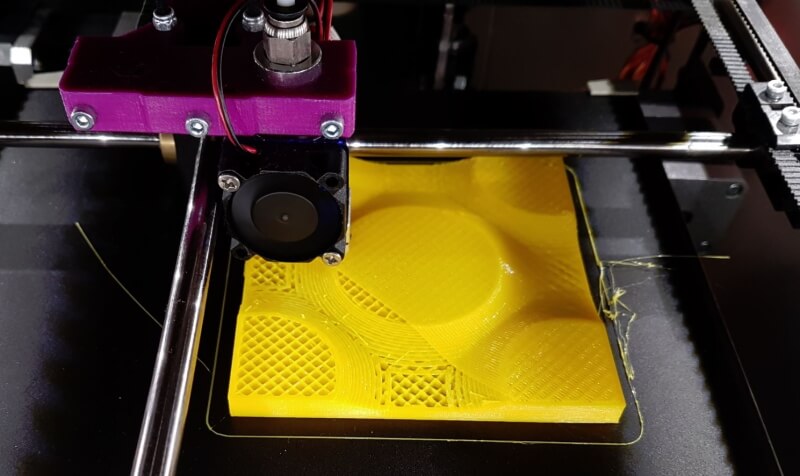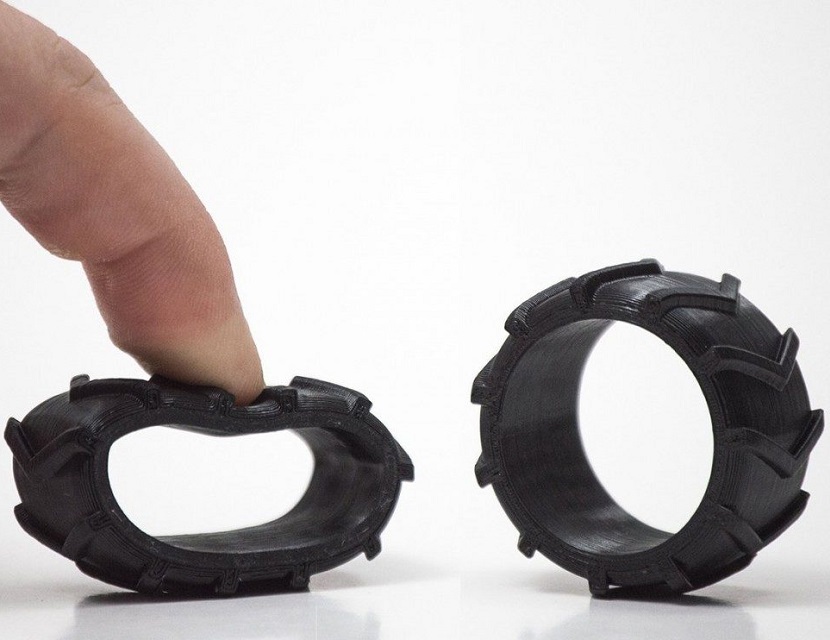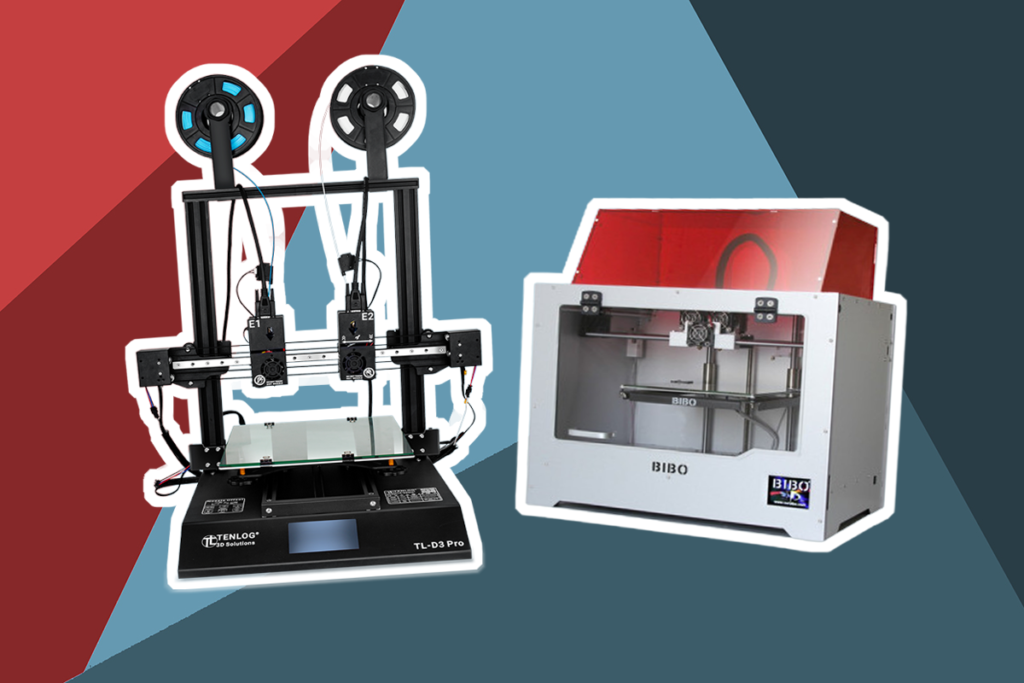

According to Statista, the global firearms industry is worth more than $24 billion. Amidst this booming industry, the use of 3D printing in creating various gun parts has been on an upward trajectory.
We’ve researched a dozen of models and selected the 5 best 3D printers for gun parts in order to help you find the one for you. The QIDI TEC X-Plus became our top choice. When choosing a 3D printer consider its speed, resolution, and build size. Speed is particularly important when printing gun parts as it determines how quickly you can complete a project. Resolutions determine how accurate your prints are, while build size determines how large of a part you can print. Additionally, it’s important to look at the materials that a 3D printer supports in order to ensure you can print with the desired material.
Other features: dual extrusion, 4.3-inch color touch screen, one-button quick leveling
We chose the Q RIDI Technology X-Plus to be our top pick since it boasts a very big build volume and fast speed of printing. Moreover, it is compatible with a big number of filaments. The build volume on this dual extrusion 3D printer is 10.6×7.9×7.9 inches, which is more than enough for building larger gun parts. The filaments it supports are PLA, PETG, TPU, Nylon, Carbon fiber, and PC. So, its versatility is quite impressive. This 3D printer handles any gun part you might want to print. Another perk of the X-Plus is a 4.3-inch color touch screen with which you can easily navigate the settings and menu. What is more, the 3D printer comes with one-button leveling which allows for quick and easy leveling the 3d printer’s bed, thus saving you a lot of time and frustration. The only flaw is that the X-plus is quite pricey, but rest assured it’s worth it!
The R QIDI Technology X-Plus has a bigger sister the QIDI Tech large size intelligent industrial grade 3D printer X-Max. Though they are both great for large gun parts, we found that the QIDI Technology X-Plus was better value for money compared to the bigger sister. Though the X-Max can print can print at higher temperatures using its secondary extruder, we did not consider this addition worthwhile enough for the extra you will have to pay.
Other features: filament runout detection, user-friendly touch screen, automatic LeviQ leveling
Another great 3D printer for gun parts, the Anycubic Kobra Max, also features a large build volume of 17.7×15.7×15.7 inches. So, you can build any gun part you need easily. And the filament runout detection the 3D printer comes with will automatically pause the printing process if it runs out of the filament in order to prevent the waste of materials. The settings and menu on this 3D printer are very easy to navigate due to integrated touch screen. The Cobra Max also comes with an automatic LeviQ leveling system that helps you get the prints of highest quality. The maximum printing speed on this machine is 180 mm/s, so it won’t take very long to get your gun parts ready.
Anycubic Kobra Max is another large gun part 3D printer, but it lost out to the QIDI X-Plus for a few reasons. First, we found that the Anycubic was difficult to set up given its sheer size. The Anycubic is 400 by 400 by 450 mm while the QIDI X-Plus is 200 by 200 by 270 mm and ABC easy to set up as all you need is a simple level check. There is also the fact that we had to pay more for the Anycubic compared to the QIDI X-PLUS. Don’t get us wrong, the Anycubic Kobra Max is a great piece of equipment. It just has to settle for second place.
Other features: genuine Titan direct drive, dual port fan cooling, 350W power supply
Our third pick is the Creality CR-10 V3. It is the most convenient 3D printer for those who embarks on a 3D printing journey. A substantial build volume makes it possible to print large objects, and compatibility with a wide variety of filaments allows you to experiment with various kinds of materials. The Creality CR-10 V3 boasts a rather fast speed of up to 180 mm/s and a decent power supply, so you can be sure it will handle the toughest and most complex prints. The portability of this 3D printer is something to write home about. The machine is very compact and is easy to set up and use. All mentioned above is not all we can say about the CR-10 V3. There is also a genuine Titan direct drive on this printer, which makes it quite powerful and precise. The dual port fan cooling proves useful if you want your prints cool and unwarped.
The Creality CR-10 V3 is an upgrade of the CR10 V2. We found the direct drive extrusion system in the V3 much more pleasant to use than the Bowden extrusion system in the V2. Though the Bowden system is easier to maintain, it has a slower response time, and needs a more powerful motor. On the other hand, the direct drive system in the V3 is more reliable and can work with a less powerful motor.
Other features: 45dB ultra-mute printing, built-in HD camera, 1-year warranty
The best thing about the FlashForge Adventurer 3 Pro is its silent operation. It operates at a mere 45dB, so you can use it at home or office and be sure there will be no loud noise whatsoever. The build volume of this 3D printer is 5.9×5.9×5.9, which is good enough. The printer is compatible with all popular filaments like PLA, ABS, PC, PETG, and even carbon fiber. The Adventurer 3 Pro features a built-in HD camera, which is great for keeping your eye on the printing process all the time. And lastly, it is covered by a 1-year warranty so you can feel confident in your choice and avoid any further problems.
The FlashForge Adventurer 3 Pro is a better version of the Adventurer 3 Lite. Though the latter is cheaper, the features in the Adventurer 3 Pro are worth every dime. First, we loved the 2MP in-built camera that lets you monitor your work in the Adventurer 3 Pro. There is also a filament run-out detection in the 3 Pro that halts printing when the filament is running low. Finally, the Adventurer 3 Pro is compatible with a higher temperature nozzle pushing printing temps to 265°C.
Other features: inductive endstop sensors, tempered glass print platform, quiet stepper driver
Our best value pick is the Artillery Sidewinder X2. This 3D Printer offers a decent build volume of 15.8×11.8×11.8 inches, which is more than enough for printing gun parts. It’s quite versatile and compatible with various filament options like PLA, ABS, Flexibles, and wood. The platform of the printer is made of tempered glass, so the prints come off clean and perfectly smooth. What is more, this 3D printer comes with inductive endstop sensors in order to improve the printer’s accuracy. Finally, the quiet stepper driver technology used by the Sidewinder X2 improves the consistency of your prints and ensure their smoothness.
In our review we found the Artillery Sidewinder X2 is the Artillery Genius Pro for people more advanced in the 3D printing journey. The former has a larger bed allowing for bigger builds which is great for massive gun parts. There is also the AC-heat bed that allows fast heating thanks to the great thermal conductivity. The result is smoother printing with superb adhesion that the Genius Pro cannot match.
Choosing a 3D printer for gun parts could be an arduous task, especially if you are not familiar with all the specs and features. There are many brands and models the market is currently offering, which can make it challenging to find a reliable one that will meet your expectations. However, we are here to help you out and make your task easier by composing this buying guide.
There is a lot of debate around such a controversial topic as 3D printed firearms. Some people believe that the same regulations should be applied to both 3D printed and conventional guns. Others consider 3D printed guns less dangerous, thus you should be able to buy them freely whenever you want.
The law hasn’t caught up with the modern technologies yet, so you won’t find definitive rules and regulations on making and using 3D printed guns. But there are a few guidelines you need to be aware of beforehand.
US laws allow to legally manufacture 3D printed guns for personal use. But remember that in order to sell or distribute 3D printed firearms, you’ll need to get a license from ATF (The Bureau of Alcohol, Tobacco, Firearms and Explosives). Also you are not allowed to 3D print guns that cannot be detected by a metal detector or X-ray machine.
In a few states there are some specific rules on 3D printed guns. For instance, people convicted of some felonies are not allowed to manufacture or own a 3D printed gun in California. As for New York, you mustn’t manufacture a 3D printed gun that does not have a serial number.
So, if you are going to acquire or produce 3D printed guns, remember to carefully examine your state laws in order to make sure you adhere to all necessary regulations. If you don’t, you risk being punished severely, even get jail time.
First and foremost, you need to make sure the printer supports all types of filaments you might require. Nylon, PLA+, and polycarbonate are the most frequently used filaments for 3D printing gun parts.
The number one filament for printing guns is nylon. It’s robust and very strong, which makes it perfect for the job. Prints made of this type of filament can endure high temperature of wear and tear.
The second type of PLA+. The PLA+ is much stronger and more durable version of the ordinary PLA material. If make your prints of this type of filament, you won’t need to worry about them being warped or deformed during the printing process. So, for the best precision we recommend going for PLA+ filament.
The third comes polycarbonate, which is the firmest filament if them all. This material boasts of incredible heat resistance, so you’d better use it to manufacture the gun parts which will be exposed to hot temperatures. You will find quite a few nice examples of printers that are compatible with this type of filament in our review article about the best polycarbonate 3D printers.
You might have noticed how incredibly popular 3D printers are these days. The traditional manufacturing methods cannot compare to the level of precision and accuracy offered by 3D printers. Precision is especially important for 3D printing gun parts, since even the smallest of the imperfections can cause a very dangerous malfunction of your gun.
You need to consider the following 3D printer specifications:
There are two factors that determine the layer thickness: the type of 3D printing technology and the filament you are using. On average, the layer thickness ranges between 0.1mm and 0.4mm. The common layer thickness is 0.2mm, which is sufficient for the most ordinary projects. But, if you are going to print very fine details or smooth surfaces, your project might require a bit thinner layers.
The printing speed depends on the thickness of layers. The thicker the layer, the faster the speed. But, bear in mind that with the thicker layers you will get poorer surface finish and higher chances of defects. Even though thinner layers will slower the speed, you’ll end up with the parts of higher quality.
So, if you want to get the right layer thickness for your project, be ready to compromise between printing speed and quality. For higher quality, you’ll have to sacrifice the speed of printing. But, for faster results, you’ll have to put up with a lower print quality. You get to decide what trade-offs are acceptable in your particular case.
Build volume is the second aspect you’ll need to consider when choosing the best printer for gun parts or basically for any other application. Build volume is the maximum size of an object that the 3D printer can print in one go. The larger the build volume, the bigger variety of gun parts it will be able to produce. Do not limit yourself on the size of the particular gun, just opt for a 3D printer that offers bigger build volume.
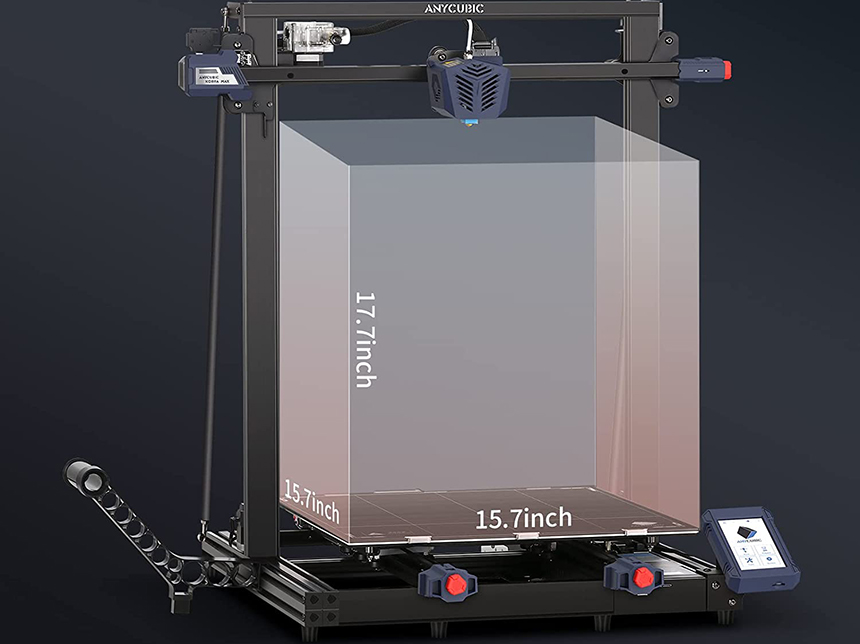
When it comes to the weight and dimensions of 3D printers, the first thing you need to understand is that a 3D printer is definitely much bigger than an average printer. They are built to fit in three-dimensional objects, so there is a lot of built-in hardware to serve this purpose.
Decide what size printer you are ready to get and how heavy it can be. If your intention is to make small objects only, you won’t need a very big and heavy machine. A smaller and lighter printer will do. If you intend to work on bigger projects, then choose the printer that is bigger and heavier to make sure it will be up for a task.
Connectivity is crucial for several reasons. First, this is the way for you to transfer your designs to the 3D printer. When using a CAD program, it is necessary for you to export the files in the suitable format that your printer can understand. The most common type of files 3D printers use is STL, so it is vital that your software is able to export to this file type.
Another reason why connectivity is an important factor is your ability to control the printing process successfully. Of course, there are LCD screens built in almost every 3D printer, but you can also control the machine from your computer or smartphone wirelessly.
Printing speed is one of the aspects based on which the 3D printers can vary quite widely. Some models can print extremely quickly, while others might take a bit more time. Different applications require different printing speed. If you want quick results, you’ll also need to think about accuracy too. If accuracy is more vital for you, be ready to sacrifice some speed, and vice versa.
If you decided to stick with a speedy 3D printer, we have compiled a guide on the best fastest 3D printers you might want to check out.
Auto bed leveling: this feature can be found on more expensive models. With this feature the prints are always level on any surface. You can check out the 3D printer models with this feature in our guide on the best auto-leveling 3D printers.
Frame type: frames come either in open or enclosed type. While open frames are cheaper and easier to build, enclosed ones allow you to control the temperature better and suit best for printing ABS and other filaments requiring hot temperatures.
Customer support: good customer support from the manufacturer is really important if you encounter any problem with your 3D printer.
All in all, we chose the Q-RIDI TECHNOLOGY X-Plus to be our Editor’s Choice. This is the best dual extrusion printer on our list. It comes with vast build size, decent speed and is compatible with the widest variety of filaments.
The Anycubic Kobra Max is our second pick. This 3D printer offers a great build volume for printing big gun parts, and its automatic LeviQ leveling system ensures the highest quality of your prints.
Our third pick for the best 3D printers for gun parts is the Creality CR-10 V3. It works well for beginners thanks to its user-friendly design, robust construction, and precise printing Titan direct drive.
Whichever model you choose, we are sure you will be happy with your decision.
